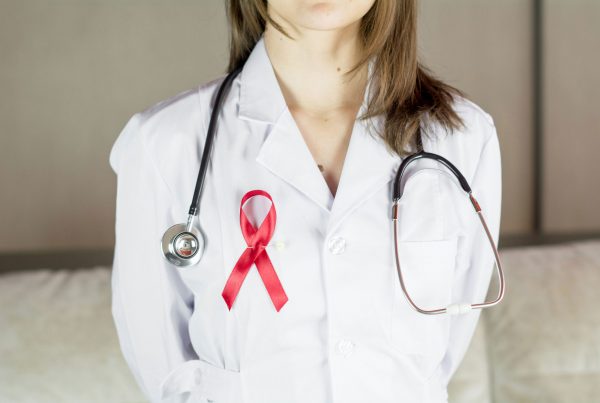Like most other mental illnesses, there are several misconceptions about bipolar disorder. It’s not just mood swings between emotional highs and lows, it is a serious, highly-disruptive disorder with potentially life-threatening consequences if not properly treated with therapy and/or medication. Bipolar disorder is characterized by intense emotional periods that typically follow a cyclical nature and exist for a defined period of time. These intense emotional periods are categorized as manic/hypomanic or depressive. In a manic/hypomanic state, a person may experience a euphoric, elevated mood, which is often accompanied or followed by irritability. According to the APA’s Dictionary of Psychology, mania is “a state of excitement, overactivity, and psychomotor agitation, often accompanied by overoptimism, grandiosity, or impaired judgment.” In a depressive state, the individual may experience deep despair or an inability to feel pleasure (anhedonia). The APA Dictionary of Psychology notes additional symptoms of depressive episodes may include poor or increased appetite with significant weight loss or gain; insomnia or excessive sleep; psychomotor agitation or psychomotor retardation; loss of energy with fatigue; feelings of worthlessness or inappropriate guilt; reduced ability to concentrate or make decisions; and recurrent thoughts of death, suicidal ideation, or attempted suicide.
Everyone experiences mood changes. However, whereas most people’s mood fluctuations last a few hours, mood fluctuations in those with bipolar disorder last days, sometimes weeks. Most notably, the mood changes in those without bipolar disorder typically do not result in extreme behavior changes and physical complications that impair their daily life. While bipolar disorder falls on the spectrum of mood disorders defined by the DSM-5, those with bipolar disorder often experience extreme changes in their energy levels, sleep patterns, eating habits, behaviors, and thoughts, which can take severe physical tolls on their bodies, sometimes even leading to hospitalization.
Statistics on Bipolar Disorder
Approximately 2.8% of American adults have bipolar disorder each year, and about 4.4% of American adults will experience bipolar disorder at some point in their lives. Based on the Sheehan Disability Scale, an estimated 82.9% of adults with bipolar disorder experience severe impairment, as opposed to the 17.1% that experience moderate impairment. In American adolescents (aged 13-18), approximately 2.9% have bipolar disorder, and 2.6% reported experiencing severe impairment. Whereas research suggests bipolar disorder affects male and female adults at similar rates (2.9% and 2.8%, respectively), research shows that adolescent females are affected at a higher rate (3.3%) than adolescent males (2.6%).
Other notable findings regarding bipolar disorder include:
- Approximately 20% of adolescents with major depression develop bipolar disorder within five years of their depression
- 62% of those with bipolar disorder report significant difficulty establishing and maintaining relationships
- Many of those with bipolar disorder report an inability or serious difficulty with daily functioning, such as attending work/school consistently (52%), time management (55%), focusing (54%), and getting/maintaining a job (50%)
- Those with bipolar disorder average a shorter lifespan of about 9 years
- Approximately 1 in 5 patients with bipolar disorder completes suicide

”The median age of bipolar onset is 25 years old. Bipolar disorder is the 6th leading cause of disability in the world and children with one parent who have the disorder are 15%-30% more likely to have the disorder as well. Children with two parents who have the disorder are 50%-75% more likely. A good treatment plan with a psychiatric mental health professional can help you feel better and prevent symptoms.
Dr. Kirsten ThompsonFounder, CEO & Psychiatrist, Remedy
Types of Bipolar Disorder
There are three general types of bipolar disorders: Bipolar I Disorder, Bipolar II Disorder, and Cyclothymic Disorder. Criteria for bipolar I disorder is met if a person has had one or more manic episodes that were not caused by drugs or other medications. Depressive and hypomanic (less severe mania) episodes are common in those with bipolar I, but diagnosis of the disorder does not require them. On the other hand, bipolar II is diagnosed if a person has experienced one or more major depressive episodes and at least one episode of hypomania. Finally, cyclothymic disorder is a type of bipolar disorder that involves experiencing several recurrent periods of hypomania and dysthymia (less severe depression), which often last for a few days rather than weeks, as seen in bipolar I and II. The key difference between cyclothymic disorder and bipolar I or II is the intensity of the episodes. Whereas manic and depressive episodes in bipolar I and II are clinically-diagnosed states, the high and low emotional states those with cyclothymic disorder experience are considered lower-intensity versions of mania and depression. While cyclothymic disorder may not impair daily functioning as greatly, it is important to identify the condition since those with cyclothymic disorder are at an increased risk of developing full-blown bipolar I and II.
Signs of Bipolar Disorder
Since there are different types of bipolar disorder diagnoses, it may be helpful to consider the disorder’s symptoms in terms of how the extreme emotional states present themselves. According to the DSM-5, below are the symptoms of manic/hypomanic and depressive/dysthymia episodes. Note: manic and depressive episodes are different from hypomania and dysthymia episodes. They have many of the same signs, but the latter (hypomania and dysthymia) are less intense versions of their counterparts (manic and depressive).
Manic/hypomanic
- Abnormally upbeat and/or talking a lot more than usual
- Increased activity, energy, and/or agitation
- Exaggerated sense of well-being and/or confidence
- Decreased need for sleep
- Uncontrollable, racing thoughts
- Difficulty or inability to concentrate due to being easily distracted
- Exhibiting impulsive decision making (i.e. expensive shopping sprees or taking sexual risks)
Depressive/Dysthymia
- Depressed mood, characterized by feelings of sadness, emptiness, and/or hopeless (Note: a depressed mood may present as irritability in children and teens)
- Significant loss of interest or an inability to derive pleasure from any or most activities
- Significant weight loss or gain, which is commonly accompanied by a significant change in appetite
- Sleeping too much or not being able to sleep at all (insomnia)
- Increased restlessness or fatigue
- Feelings of excessive or inappropriate guilt or worthlessness
- Difficulty or inability to concentrate or make decisions
- Suicidal ideation and/or attempting suicide
Psychiatric Comorbidities
Like all other mental illnesses, research continues to be conducted to better understand the complexities of bipolar disorder and its associations. Psychiatric comorbidities of bipolar disorder are common in addition to the more well known associations, such as anxiety, delusions, or hallucinations. In one study using data from the National Comorbidity Survey, found that 95% of respondents with bipolar disorder met diagnostic criteria for 3 or more lifetime psychiatric disorders. Some commonly identified psychiatric comorbidities in those with bipolar disorder are anxiety, substance use disorder, and ADHD. It is important to discuss the possibility of psychiatric comorbidities with the professional treating you since they add complexity to your mental state and your treatment should reflect that.
Bipolar Disorder vs. Borderline Personality Disorder vs. Manic Depression
Bipolar disorder and borderline personality disorder often get confused because of their similar acronyms (BP vs. BPD) and because there are several ways in which they may present themselves similarly, especially when it comes to manic/hypomanic episodes in bipolar disorder. To begin, the key difference between the disorders is that one is a mood disorder while the other is a personality disorder. Bipolar disorder is a mood disorder meaning the root of the problem is a disturbance in the relationship a person has with their emotions. These disorders are typically thought to be the result of biological factors, such as an imbalance in brain chemistry, so the symptoms are usually due to internal conflict. In contrast, borderline personality disorder is personality disorder meaning the root of the problem is an unhealthy pattern of thoughts, beliefs, or behaviors. These disorders are typically thought to be the result of experiencing adverse events in childhood, such as abuse. These experiences impact personality development, which in turn, plays a significant role in how a person interacts with others or is able to form any type of relationship (i.e. friendship or romantic) in the future.
Below are a few of the borderline personality disorder diagnostic criteria outlined by the DSM-5. These include significant impairments in:
- Identity: poorly developed or unstable self-image, often associated with excessive self-criticism
- Self-direction: instability in goals, aspirations, values, or career plans
- Empathy: compromised ability to recognize the feeling and needs of others associated with interpersonal hypersensitivity (i.e. prone to feel insulted)
- Intimacy: intense, unstable, and conflicted close relationships, marked by mistrust, neediness, and anxious preoccupation with real or imagined abandonment
With this set of diagnostic criteria, it is easier to identify the differences between bipolar disorder and borderline personality disorder since these are not defined by any particular emotional component. However, the most notable reason bipolar disorder is confused with borderline personality disorder is because of manic episode symptomology. Similar to how the DSM-5 describes a manic episode, other DSM-5 diagnostic criteria for borderline personality disorder include:
- Impulsivity: acting on a momentary basis without a plan or consideration of outcomes; difficulty establishing or following plans
- Risk taking: engagement in dangerous, potentially self-damaging activities, unnecessarily and without regard to consequences
- Hostility: persistent or frequent angry feelings; anger or irritability in response to minor things
Therefore, bipolar disorder is susceptible to being misdiagnosed as borderline personality disorder because they both may present themselves as impulsive, erratic behavior, which naturally impacts an individual’s relationships and interactions regardless of the actual disorder they have. In order to discern bipolar disorder from borderline personality disorder and diagnose an individual properly, a key feature psychiatric professionals look at is the duration of symptoms and symptoms patterns. In those with borderline personality disorder, mood swings tend to occur more rapidly – sometimes several times in a single day – whereas those with bipolar disorder will typically hold the same overarching emotional state for at least a few days.
Lastly, there is a common misunderstanding between the terms “bipolar disorder” and “manic depression.” To clarify, they are both referring to the same disorder, but the term “manic depression” is its outdated name. As briefly mentioned before, bipolar disorder was not referred to by that name until the publication of the DSM-3 in 1980. It was changed to better capture the true nature of the disorder and to dissolve the negative, inaccurate associations placed on patients with this diagnosis as “maniacs.”







